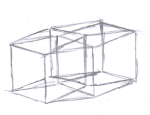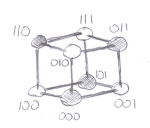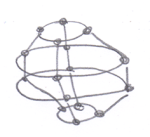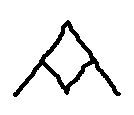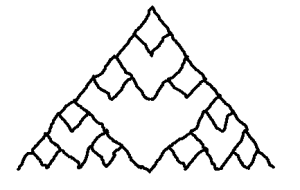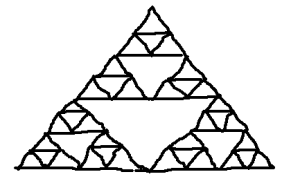Quaternary: An Apology, Space, and Time Travel
First off, I must apologise for my lack of activity on this blog over the last few weeks. This was not intentional, and I fully intend to continue posting. I have been incredibly busy both in and out of school, what with UCAS, moving house, having my eighteenth birthday, and so on. In lieu of an actual post written specifically for this blog, I present to you my essay on time travel which comprised my Physics A2 coursework.
Time travel: is it feasible, and how would it be accomplished?
Time travel has long been a staple of science fiction stories everywhere, from Doctor Who to H. G. Wells’ The Time Machine, published over a hundred years ago. It has long been assumed by the scientific community that these stories are impossible, as they run counter to the common sense view. While the stories themselves may never happen, the idea that time travel is impossible because it is counterintuitive is perhaps a flawed one; the same has often been said about various principles that we now hold to be fact, such as the orbit of the Earth around the Sun (not the other way around), that the age of the Earth is some 4.5 billion years old (not around six thousand), and suchlike. Recently, therefore, serious consideration has been given to the possibility of time travel, and this paper will explain the basic underlying principles of time travel, whether it is even allowed by the laws of physics, and what methods one might conceive of to do so.
Firstly, for time travel even to be possible, the past, present, and future must all exist, i.e. all points in time must be equally real. The philosophy of time is tangential to the matter at hand and so shall only be mentioned briefly, but this concept is known as eternalism (1) (2), as opposed to presentism, which is the view that only the present exists. The way time is modelled in special relativity, for example, lends credence to this view; there is no privileged frame of reference, and as such, it is possible for two observers to disagree over the simultaneity of two events, i.e. whether they happened at the same time or at different times. Special relativity (and eternalism) implies that space and time are the same thing – that time is merely a dimension like the familiar three of space. The laws of physics, then, suggest that in principle time travel would be possible, as the past and future exist independently of the present.
If space and time are the same thing, then we can refer to them into one word – spacetime. Every event has a coordinate in spacetime; the position in x, y, z, and t. If we consider an object to be a continuous sequence of events in spacetime, and plot each event, we get a worldline – a “line in spacetime comprising the successive points occupied by a particle, celestial object, etc., throughout its history” (3). An example is that of the Earth orbiting the Sun; the Earth traces an elliptical orbit in space, but arrives at the original point at a later time, thus tracing a helical worldline. Between two points, there is a spacetime interval, s², defined for Euclidean (flat) space, as follows:
(4)
where c is the speed of light, and ∆r and ∆t are the differences in the space and time coordinates between the events.
If , the temporal separation, is greater than
, the spatial separation, (and thus
), the path is said to be timelike, and it is possible that there is a causal relationship between the two events. Event pairs can thus be said to happen in each other’s past or future, and there is a frame of reference where they occur in the same space, but none where they occur in the same time. The time between two events is called the proper time (∆τ), defined as the time recorded by a clock passing in between both events, and is as follows:
(4)
Where , (or
), the spatial distance is balanced by the time between the events, yielding a spacetime interval of zero. This is called a lightlike interval (named after the fact that light travels along this sort of worldline), and can trace out a “light cone” which defines, from event A, all possible causally linked regions of spacetime in the past or future. Events outside of the light cone are labelled “elsewhere”.
If , (or
), then there is not enough time between the two events for there to be a causal relationship, and the interval is known as spacelike. The distance between the two events is called the proper distance (∆σ) and is as follows:
(4)
For an object to have a spacelike worldline there would be certain frames of reference in which causality is violated, and so hypothetically, if one could send a signal faster than light, there is a certain reference frame where it has travelled backwards in time. As special relativity dictates that there is no preferred reference frame, this means it is possible to use a faster-than-light (FTL) signal to send information backwards in time in any frame. If, for example, observer A sends a signal to observer B moving FTL in A’s frame but backwards in time in B’s frame, and then observer B sends the signal back moving FTL in B’s frame but backwards in time in A’s frame, then it is possible for A to receive the message before it was originally sent (5) (6) – violating causality in every reference frame.
A possible route to this would be through hypothetical particles called tachyons, which always travel faster than light. However, it is unlikely that tachyons can exist, as if one considers the relation (where E is the energy of the particle, p is its momentum, and m is its mass), then for a tachyon where its velocity is greater than c it would have to have a negative square mass – i.e. the mass is imaginary. This means that they accelerate as they lose energy, and so a zero-energy tachyon would travel infinitely fast. If charged tachyons could exist, they would release Čerenkov radiation (a “photonic boom”) that would release energy and accelerate the tachyon more, leading to a runaway reaction where arbitrarily high amounts of energy are released (7).
Furthermore, a tachyonic field having an imaginary mass is highly unstable, and undergoes what is known as tachyonic condensation. The following analogy explains tachyonic condensation and imaginary mass: if one considers a long line of pendulums, all pointing down, with each mass attached to its neighbours by springs, moving one will cause it to oscillate somewhat, and pull the others with it, propagating the oscillation. Theoretically, one could have an infinite line of infinitely close pendulums with a propagation speed equal to c, which models a quantum field. Moving the pendulums requires an upward motion, thus implying a positive energy (and therefore mass). Now, if one considers that each pendulum starts pointing straight up, and will remain so until perturbed. This is a highly unstable configuration, as giving the pendulum a small downward movement will attest. The pendulums will fall down to the stable state, but will propagate at the same speed as before. This perturbation results in an exponential cascade until the field has condensed from a negative energy (and imaginary mass) state to a positive energy one (8).
Another possible way to travel through time without relying on superluminal particles involves using worldlines that curve back on themselves called closed timelike curves (CTCs). These do not occur normally, but under certain curvatures of spacetime, it is possible to create a CTC. For example, a dense, infinitely long cylinder which rotates about its longitudinal axis, if it were to rotate fast enough, could create a CTC (this object is known as a Tipler cylinder) (9). A more well-known method of creating a CTC is by using a wormhole. If one can stabilise a wormhole for long enough for it to be of practical purpose, one could subject an exit to an acceleration while keeping the other stationary, making the accelerated end age less due to time dilation. This means that time connects in a different way through the wormhole than it does outside of it, meaning that one could travel backwards or forwards in time by traversing the wormhole (10) – however, this is more of a shortcut through time rather than an actual device to control time travel, and does not allow for one to travel to before the creation point of the wormhole. Furthermore, it is possible that one could not stabilise a wormhole with a time difference between the two ends due to radiation interference; if this is correct, the wormhole would either collapse, or the two ends would repel each other until they were no longer able to violate causality (11).
But even supposing that one can travel back to the past without any issues, there is still the grave problem of paradoxes. These are certain sequences of events to which, at first glance, there seems to be no obvious solution. The ubiquitous grandfather paradox is an example of this, but a simpler one is that of a snooker ball being aimed through a wormhole in such a way as to go back in time and knock itself away from the mouth of the wormhole. In each, there is the seeming contradiction where the event both does and does not happen. However, there are two ways to circumvent the issue.
Firstly, there is the Novikov self-consistency principle, which asserts that if an event were to induce a paradox, or in fact try to change the past in any way, the probability of that event occurring is zero. For example, with the snooker ball example above, two Caltech students, Fernando Echeverria and Gunnar Klinkhammer, discovered that not only was there a solution where the ball would hit itself in such a way as to knock it into the wormhole, and thus yield a self-consistent result, but were in fact unable to find any initial situation where a self-consistent solution did not exist (12).
Secondly, there is the many-worlds interpretation of quantum mechanics. Simply put, it states that every time any particle has to “choose” a state, both happen in separate branches of time, and so there are a practically infinite number of alternate universes whether anything that did not happen in this universe has happened in another (13). In such a case, anything that one could do that would induce a paradox instead causes a new universe to be created; for example, if one did go back in time to kill one’s grandfather, rather than causing a paradox, there would just be a universe in which he was dead, which would not be a problem for the would-be murderer, as they come from a universe where this did not happen.
And yet there is still a form of time travel not discussed that does not suffer from the problem of paradoxes. This is, of course, travelling into the future. In a way, this happens already, even for stationary objects (albeit at the rather pedestrian rate of one second per second). This can be achieved at a much greater rate through time dilation, although this is a one-way trip. In order to do so, one would have to travel at a speed approaching c. As one gets closer to c, the extent of the time dilation one undergoes increases without bound, under the relation:
where γ is the relativistic factor. This has practical applications in space travel – a constant acceleration of 1g would enable humankind to travel across the entire known universe in a single lifetime (14), and any explorers returning to Earth could arrive billions of years in the future.
Works Cited
1. Kuipers, Theo A. F., et al. General Philosophy of Science: Focal Issues. illustrated. s.l. : Elsevier, 2007. p. 326. ISBN 978-0-444-51548-3.
2. Philosophy File. The Philosophy of Time. YouTube. [Online] 23 August 2011. [Cited: 8 November 2012.] http://www.youtube.com/watch?v=zw6hS_gy9MY.
3. Oxford University Press. Oxford English Dictionary. [Online] 1914. [Cited: 8 November 2012.] http://www.oed.com/view/Entry/230262?rskey=31X9rI&result=1&isAdvanced=false#eid1.
4. Wikimedia Foundation, Inc. Spacetime – Wikipedia, the free encyclopedia. Wikipedia. [Online] [Cited: 8 November 2012.] Equations taken from article. http://en.wikipedia.org/wiki/Spacetime.
5. Benford, G. A., Book, D. L. and Newcomb, W. A. The Tachyonic Antitelephone. Physics Review D. 15 July 1970, Vol. II, 2.
6. Bohm, David. The Special Theory of Relativity. 2nd. s.l. : Routledge, 1996. ISBN 978-0-415-14809-2.
7. Chase, Scott I. Do tachyons exist? [Online] Department of Mathematics: University of California, Riverside, March 1993. [Cited: 19 November 2012.] http://math.ucr.edu/home/baez/physics/ParticleAndNuclear/tachyons.html.
8. Aharonov, Y., Komar, A. and Susskind, L. Superluminal Behavior, Causality, and Instability. Physics Review. June 1969, Vol. 182, 5.
9. Tipler, Frank J. Rotating cylinders and the possibility of global causality violation. Physical Review D. 15 April 1974, Vol. 9, 8.
10. Thorne, Kip. Black Holes and Time Warps. s.l. : W. W. Norton & Co., 1994. ISBN 0-393-31276-3.
11. Visser, Matt. From wormhole to time machine: Remarks on Hawking’s chronology protection conjecture. Physics Review D. 15 January 1993, Vol. 47, 2.
12. Earman, John. Bangs, Crunches, Whimpers, and Shrieks: Singularities and Acausalities in Relativistic Spacetimes. s.l. : Oxford University Press, 1995. ISBN 0-19-509591-X.
13. Osnaghi, Stefano, Freitas, Fábio and Freire, Olival Jr. The origin of the Everettian heresy. Studies in History and Philosophy of Modern Physics. 2009.
14. Calder, Nigel. Magic Universe: A Grand Tour of Modern Science. illustrated, reprint. s.l. : Oxford University Press, 2005. ISBN 978-0-192-80669-7.
